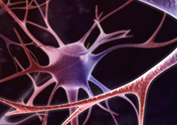
In one of the first significant studies of the effects of three-dimensional content on K-12 instruction, Colorado’s Boulder Valley School District (BVSD) found that the use of 3D content helped increase student engagement and led to better achievement in some cases—with the lowest-performing students seeing the greatest benefits.
Through a pilot project called “BVS3D,” Boulder Valley teachers used stereoscopic 3D content in eight classrooms within four schools during the 2010-11 school year.
The test sites included fourth-grade science and math classes at Douglass Elementary School, middle school science at Casey Middle School, high school science (including Advanced Placement Biology) at Monarch High School, and middle school social studies, math, and science in a special-needs context at Halcyon Middle-High School, a day treatment and educational facility for students with behavioral problems. Content providers included DesignMate, JTM Concepts, Cyber Anatomy, and Amazing Interactives.
BVSD partnered with Regis University in Denver to evaluate the results of the pilot project, and a formal report is expected next month. Len Scrogan, director of instructional technology for the district, shared the district’s early observations during the InfoComm 2011 conference in Orlando last week.
For more news about 3D in education, see:
3D printers give engineering classes a boost
A few findings stood out across all test sites, Scrogan said:
• Higher levels of student engagement. BVSD observed three phenomena that suggested students were more interested in the content, he said: increased attention to the subject matter (focus), longer sustained focus on difficult materials (attention span), and better student behavior, as defined by fewer disruptions per lesson (classroom discipline).
• Favorable reaction by students. In a survey of high school students involved in the pilot, 76 percent said they preferred learning in 3D over traditional methods. Elementary, middle school, and special-education feedback was similarly positive, Scrogan said.
• Greater student clarity in understanding abstract concepts. “It provided a better visualization than the textbook,” said one student, referring to 3D renderings of cellular structures in biology. Another student said, “It was easier for me to picture it and understand the structure,” while a third said: “These 3D videos do help me learn [the content] easier, especially because I’m a visual learner. Seeing what is going on is much more helpful than just talking about it. … Because it’s in 3D, it’s literally in front of you.”
In terms of student achievement, fourth graders who previously had struggled in math experienced two-and-a-half times the gains on informal post-test measures than other students, suggesting that 3D lessons might help close persistent achievement gaps, Scrogan said. And the AP Biology teacher saw an 11-percent achievement bump in the essay portion of a test on cell parts and active/passive transport, he said—although there was no significant difference in how students answered multiple-choice questions.
Scrogan believes students who have experienced 3D lessons are retaining the information longer, even after they’ve taken a test on the subject. Student surveys have revealed a phenomenon that he calls “mental reconstruction,” in which “kids are rebuilding the learning in their mind,” sometimes weeks after seeing the concepts depicted in three dimensions.
He also said teachers have reported a high degree of what he calls “learning replay,” in which students are shown a lesson in 3D, and they ask: “Can we see that again?”
For more news about 3D in education, see:
3D printers give engineering classes a boost
Students want to see another facet of the image that they didn’t catch before, Scrogan explained, adding: “You don’t get that with other forms of multimedia in schools.”
Perhaps the most encouraging findings occurred at Halcyon Middle-High School, BVSD’s day-treatment facility, where students often have trouble sitting through a 40-minute class period.
“Our special-education population was able to maintain interest in the content for a full 40 minutes, which is extremely rare,” Scrogan said. “Forty minutes of uninterrupted science instruction with no behavioral incidents … is significant. This really pulls kids in and prevents distraction.”
For more information about BVSD’s use of 3D content, see Scrogan’s blog.
- SchoolStatus Launches SchoolStatus Boost, an Innovative Educator Development Solution for Enhanced Teacher Growth and Development - April 22, 2024
- Frontline Education Releases Inaugural K-12 Lens Survey Report To Guide K-12 Decision-Making - April 20, 2024
- Arizona’s Apache Junction Unified School District Supports Innovative Teaching and Learning with New EdTech Resources - April 19, 2024



Comments are closed.